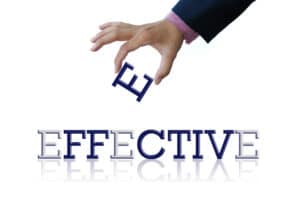
What are the best executive coaching programs? Which are the top executive coaching firms?
Executive coaching is probably the most effective and the most popular leadership development tool. Companies ranging from startups to large multinationals use executive coaching to support their leaders.
In this article, I will answer the following questions.
- What is executive coaching?
- Why do companies hire an executive coach?
- What are the best executive coaching programs?
- Which are the top executive coaching firms?
What is executive coaching?
It would be an understatement to say that today’s business environment is challenging for top executives. Constant and rapidly accelerating change driven by technology, relentless cost-cutting, flatter organizations, global competition, and many other challenges take up a leader’s time and energy and keep them awake at night. We often expect the leaders and executives to figure out things for themselves in this constantly changing world. We expect them to have all the answers. We expect them to keep their skills updated, work under pressure, and change and innovate to stay ahead of the competition. A leader may likely do these things herself, but the fact is that most executives need help. That is where executive coaching comes in.
Read: Everything you ever wanted to know about executive coaching.
Executive coaching is probably the best tool available for the leadership development of the executive.
It is a personalized and confidential relationship between the coach who is a trained professional and the executive being coached. Executive coaching helps leaders to take stock of their current level of competencies to maximize their strengths and overcome areas of weakness. It also helps the leader see how others perceive his/her behavior, which helps improve the relationship with and the team members’ engagement. The executive coach also clarifies goals, strategy, and plan for action, focus, and accountability.

Why do companies hire an executive coach?
In a study conducted by Diane E. Lewis, companies identified various reasons for hiring executive coaches. Here is the list of the top five reasons, with the percentage of respondents citing that particular reason in parentheses.
-
-
- For developing the leadership skills of high-potential individuals (86%).
- To improve the odds that newly promoted managers would be successful (64%).
- Development of management and leadership skills among their technical people (59%).
- Rectifying behavioral problems at the management level (70%).
- To help leaders resolve interpersonal conflicts among employees (59%).
-
Other surveys have also confirmed leadership development as the primary reason for hiring an executive coach. The perception of coaching has also changed from remedial (needed to fix something wrong with the executive) to developmental (the company is investing in my development).
Executive coaching also meets multiple talent management needs.
- Developing high potential employees.
- Leadership pipeline and succession planning.
- Help leaders transition up and across.
- Overcoming derailing behaviors of otherwise technically brilliant employees.
Read: Executive Coaching that fits multiple talent management needs.
Which are the best executive coaching programs?
No dearth of coaching providers!
Most of the top consulting firms offer executive coaching programs. Top business schools and leadership development consulting firms also offer executive coaching programs.
There are many executive coaching programs and approaches available in the market. Unfortunately, the bar to enter executive coaching is low. Many agencies “certify” any individual willing to pay the fees and attend a weekend program.
There is a lot of variation in the coaching approach depending on the coach. There is also uncertainty about areas of development for the executive that the coach is helping with. Often the question – “What area of improvement is the coach and the leader is currently working on?” is not crystal clear. And it often changes with time during the duration of the coaching engagement.
Buyers beware!
Unfortunately, most leaders and human resources professionals are not clear about what coaching methodologies to use and which ones work. Sadly, the choice is often based on the coaching vendor’s marketing and branding instead of the coaching process’s effectiveness. Most coaching agencies cite the satisfaction level of the leader as the measure of their success. While it is good that the leader liked the coach, the real question is, did the leader improve as a result of executive coaching?
Measuring success
How do you measure the effectiveness and the success of any coaching program? A coaching process’s true measure is the leader’s behavior change at work as observed and anonymously rated by the leader’s team members. The leader’s behaviors determine the culture of the team. The culture results in engagement and performance, or a lack of it, as it may be the case.
The behavior change of a successful adult is a difficult feat to accomplish. Hence it is necessary that the coaching process is structured, uniform, and well defined.
An excellent executive coaching program should also be supported with large-scale and statistically significant studies on the program’s effectiveness.
One of the most popular and widely used executive coaching programs worldwide is the stakeholder-centered executive coaching approach. It is often considered the best executive coaching program for top leaders of multinational companies. Over the last 40 years, it has been used to coach over 400,000 executives in over 60 countries – including executives from 150 of the Fortune 500 companies.
In a survey of 11,000 leaders on four continents, over 95% of the leaders using the stakeholder-centered process improved. The same process is available worldwide through 3000 coaches in 200 cities of 55 countries in multiple languages.
What is stakeholder-centered executive coaching? Why is it considered one of the best executive coaching programs?
Here are the key defining points of the stakeholder-centered executive coaching process that make it probably the best executive coaching program. It is one of the top executive coaching programs in the world. It is also the largest executive coaching network in the world.
Supporting successful people
Stakeholder-centered executive coaching helps successful leaders become more successful. It is not to “fix” a low performer. This list also includes people who are identified as “high potentials” and expected to take up future leadership roles.
To grow their leadership behavior effectiveness.
Leadership behavior effectiveness makes the leader aware of his behaviors and their impact on the team members. Behavior change helps establish better relationships, better employee engagement, and improved performance of the team. It also includes rectifying derailing behaviors. These are the annoying behaviors of otherwise good leaders. Often such behaviors become a hindrance to smooth team functioning, and stakeholder-centered coaching helps leaders improve their own derailing behaviors and change the perception of the team members.
Often people are promoted to a higher role without much support due to business emergencies like an urgent project or a senior leader leaving the organization. Leadership coaching also helps leaders transition into a higher role. It also helps the leader transition across into another role within the company – when such a need arises.
Through Feedback / Feed-forward from Stakeholders on the Job
Feedback allows the leader to realize the blind spots that may act as the leadership bottlenecks. However, once they receive the feedback, most of the focus is on feed-forward. Feed-forward is asking for suggestions from team members (stakeholders) for improvement for the future. This takes the focus away from the past – which cannot be changed, to the future – which can be improved if the leader acts on the stakeholder’s suggestions.
In their professional job environment
Unlike life coaching or some other executive coaching programs, stakeholder-centered executive coaching focuses solely on the executive’s professional development. It does not focus on personal issues, which are often addressed in life coaching.
To create pre-defined results.
The executive being coached usually determines the agenda of life-coaching. The agenda may also change during the span of the life-coaching engagement. Stakeholder-centered executive coaching assesses the leader on pre-defined leadership competencies. The assessors are the leader’s stakeholders – team members who frequently interact with the leader. Superiors, subordinates, peers, and sometimes customers or vendors. Once the leadership bottleneck competencies are identified, the executive coach and the leader work on improving these pre-defined competencies for the entire executive coaching engagement duration.
As acknowledged by the stakeholders
Stakeholders are the leader’s team members who frequently interact with the leader. They are at the receiving end of the leader’s behaviors. In other words – they are the “customers” of the leading product. No one else is in a better position than the stakeholders to assess whether or not the leadership behaviors are good and whether they are improving. In the stakeholder-centered executive coaching process, as the name suggests, stakeholders are at the center. Ultimately, they decide whether or not the leader has improved her behaviors through an anonymous survey. We consider a leader to have improved, not because the leader says he has improved, or the coach says he has improved, but only when the stakeholders (through an anonymous survey) confirm that the leader has improved!
Using a well-defined process/system for 6-12 months
Stakeholder centered executive coaching process is a well-defined and tried and tested process. It is designed to appeal to the leader’s ways of thinking and leverage them to improve. It is also a process that has been used to coach more than 400,000 executives in more than 60 countries – including executives from 150 of the Fortune 500 companies. The process is highly effective. In a survey of 11,000 leaders on four continents, more than 95% of the leaders using the stakeholder-centered process improved. Stakeholder-centered executive coaching usually lasts from a minimum of six months up to a year and a half.
Technology–assisted – Virtual OR Face to face
Technology has advanced, and video conferencing is a norm in any large organization. This is especially true after the pandemic. Although nothing beats the human touch when establishing rapport and connection, video coaching is the next best thing to being together. Besides, online software and tools allow continuous communication rapport between the coach and the leader. Scientifically designed online tools also support the leader in between coaching sessions with reminders and accountability.
Read: How to find the best executive coach for you or the leaders in your organization.
Conclusion:
What is stakeholder-centered executive coaching? Why is it the largest and one of the top executive coaching firms?
It is the process of
-
-
- Supporting successful people
- To grow their leadership behavior effectiveness (including developing specific competencies, transition up or across, and overcoming derailing behaviors)
- Through Feedback / Feedforward from Stakeholders on the job
- In their professional job environment
- To create (predefined ) results.
- As acknowledged by stakeholders
- Using a well-defined process/system for 6-18 months
- Technology-enabled – Virtual or in-person
-
Selecting the right executive coaching program, firm, and coach is critical.
Selecting the right executive coaching firm, the right executive coaching program, and the right executive coach is critical to any executive coaching intervention’s success and effectiveness. Not spending enough time and not doing due diligence may result in a waste of time, money, and effort and may tarnish the reputation of the Human Resources or top management, who usually are the executive coaching intervention sponsors.
Read: 9 Reasons Why Executive Coaching Programs Fail in Organizations.
NAL Triple Advantage Leadership Coaching.
That delivers guaranteed and measurable leadership growth. It is based on a stakeholder-centered coaching process with a 95% effectiveness rate (in a study of 11000 leaders on 4 continents). It is used by companies ranging from startups to 150 of the Fortune 500 companies to develop their leaders.
Here are some of the salient benefits of NAL Triple Advantage Leadership Coaching
Time and resource-efficient: The leader does not have to leave work to attend training programs. We go to the leader and her team. And it only takes 1.5 hours per month. The rest of the time, the leader is working to implement with her team.
Separate and customized improvement areas for each leader: Every leader is different. One size fits all approach doesn’t work. Individual development areas for each leader aligned to the business strategy.
Involves entire team: Unlike most leadership programs, NAL Triple Advantage Leadership Coaching involves the leader’s entire team, and it has a cascading effect – increasing the team effectiveness and improving organizational culture.
The leader becomes the coach: for continuous improvement for leaders themselves and their teams. It is like kaizen for your leadership development.
Cost-Effective: Our entire one-year coaching engagement often costs less than sending the leader to a short-duration leadership program at any reputed B school.
Guaranteed and measurable leadership growth: as assessed – not by us – but anonymously rated by the leader’s own team members.
Pay us only after we deliver results!: We work with many of our clients on a pay for results basis. What does it mean? If the leaders don’t improve, you don’t have to pay us.
Access to our scientifically designed online platform
Scientifically designed online platform to help the leader form habits and achieve leadership growth
- Track and measure every aspect of your development plan
- Everything in a single place – actions, metrics, notes, journal, and more
- Convenient one-click access on any device – anywhere, anytime, any device
- Timely reminders of actions and activities
- Access to files, resources, videos, and activities
- Book summaries, role-play, and more.
- Continuous and non-stop personal care and support of the coach
- Two-way communication with the coach continuously
- Encouragement, support, and accountability
Other Value additions
Unlike training programs, our process is time and resource-efficient
- It takes only 1 to 1.5 hours per month of a leader’s time.
- The leader learns and applies for his/her own work with his/her own team.
Compare that to the leader going to a leadership training program.
- Cost of the training program
- The financial cost of time away from work
- Productivity loss due to time away from work
- Little application at work of the concepts learned in the training program.
The benefits cascade down to the team.
- As the team members are involved in the entire process, they also improve.
- The leader becomes the role model of desired behaviors, and it rubs off on the team.
The leader becomes the coach.
- The final session is to help the leader become a coaching leader.
- The entire coaching process is designed to deliver measurable leadership growth for the leader.
Schedule an exploratory 15-minute conversation with our leadership adviser today
Click the button below.
SCHEDULE NOW!
References
What is executive coaching? td-org



